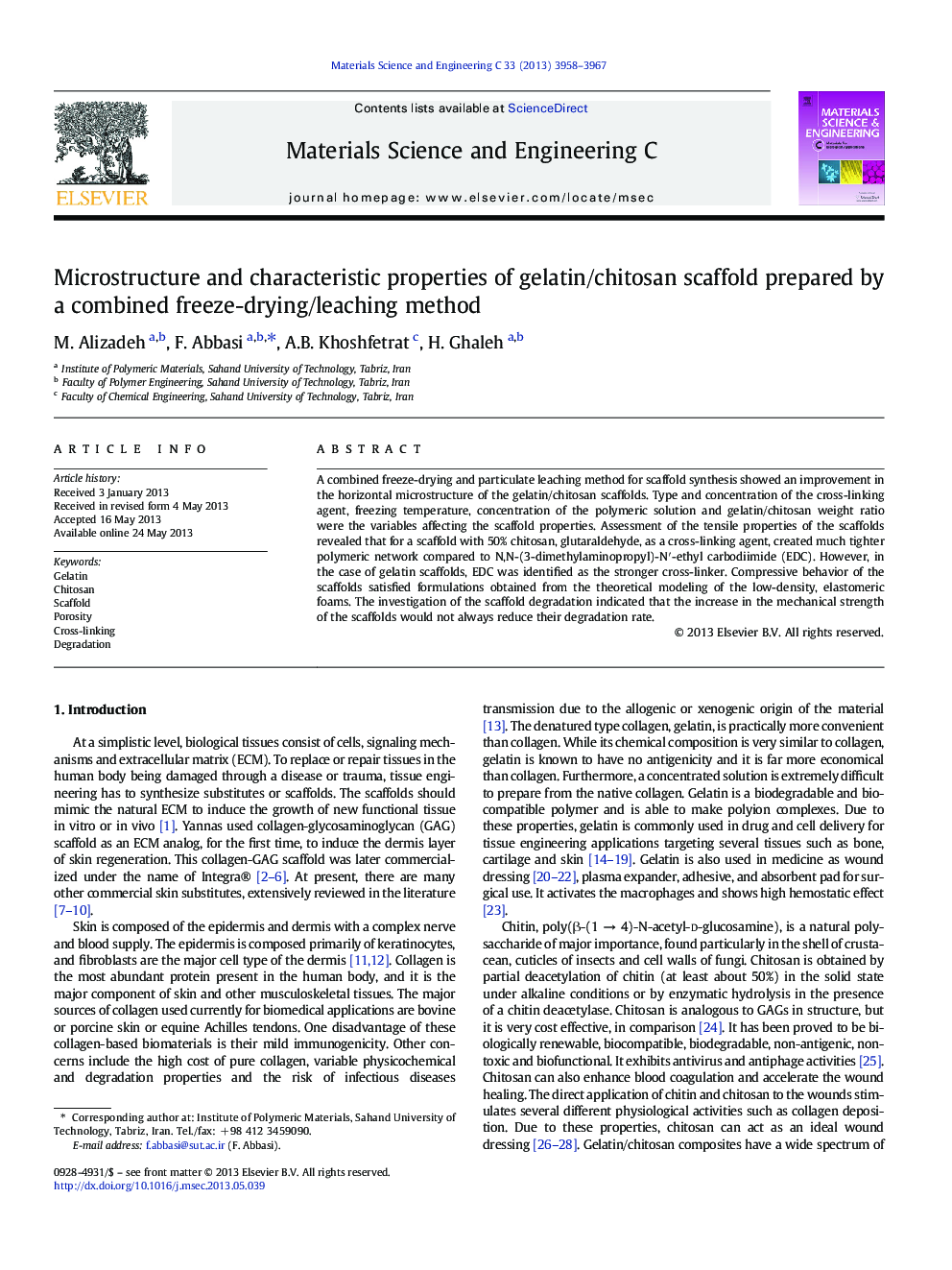| Article ID | Journal | Published Year | Pages | File Type |
|---|---|---|---|---|
| 10614575 | Materials Science and Engineering: C | 2013 | 10 Pages |
Abstract
A combined freeze-drying and particulate leaching method for scaffold synthesis showed an improvement in the horizontal microstructure of the gelatin/chitosan scaffolds. Type and concentration of the cross-linking agent, freezing temperature, concentration of the polymeric solution and gelatin/chitosan weight ratio were the variables affecting the scaffold properties. Assessment of the tensile properties of the scaffolds revealed that for a scaffold with 50% chitosan, glutaraldehyde, as a cross-linking agent, created much tighter polymeric network compared to N,N-(3-dimethylaminopropyl)-Nâ²-ethyl carbodiimide (EDC). However, in the case of gelatin scaffolds, EDC was identified as the stronger cross-linker. Compressive behavior of the scaffolds satisfied formulations obtained from the theoretical modeling of the low-density, elastomeric foams. The investigation of the scaffold degradation indicated that the increase in the mechanical strength of the scaffolds would not always reduce their degradation rate.
Related Topics
Physical Sciences and Engineering
Materials Science
Biomaterials
Authors
M. Alizadeh, F. Abbasi, A.B. Khoshfetrat, H. Ghaleh,
